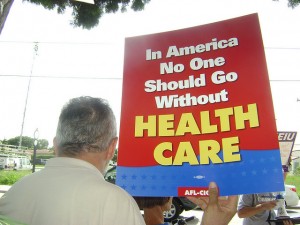Health Care Crisis: Dramatic Impact on American Women
Jun 25th, 2009

The State of healthcare affordability in the USA is dismal at best. Nearly 50 million Americans have no insurance or are underinsured at present. Though this bleak situation affects men and women alike, the brunt of the problem is that more women find themselves uninsured or underinsured. Though on the whole, both genders share common illnesses, they do not share common access to health insurance or its affordability.
The health insurance plans for men and women between the ages of 19 and 64 are similar in coverage requirements however; the pattern of which gender is insured differs. Over 110 million Americans are insured through the company that they work for, while 10 million individuals, women slightly more than men, buy personal insurance for themselves and family. The remaining approximately 8 million individuals are insured through Medicare or the military and other places. More women are actually insured by Medicare than men. The rest of the population not falling under any of these categories is not insured at all.
Women generally have lower incomes than men, 17 percent of women in the 19 – 64 age group live below the poverty level. Women earn roughly a third less than their male counterparts. In 2004, the average American woman, earned $22, 000 while the average man earned $32,000.
Some individuals are insured for part of the year but not all year. This occurs with part-time workers, however, the stats indicate that approximately 13% of men are part-time workers, while 22% of women are part-time workers. Furthermore, more women are likely to be without jobs the whole year as opposed to their male counterparts. This stat provided by Eriu (Economic Research Initiative of Insured, http://www.rwjf-eriu.org/qa-fastfacts.html indicates that 14 percent of American women are not insured year-long.
Since women are more likely to be unemployed or working only part-time, they have less access to employer-based insurance, which is more affordable than private-based health insurance. Most women will depend upon their spouses for insurance coverage rather than their employer because they may not have one. At a glance, it does look like a valuable option but this type of insurance called dependant coverage has its shortfalls as well. This coverage is not very dependable; the woman must remain married, and depend on her husband to stay in the job and also to want to cover her in the first place. Even more disturbing is the fact that employers have been cutting back on dependant coverage because the cost is beyond their financial budgets as well.
Age also plays an important role in dependant coverage; older workers between the ages of 50 – 64 are targeted in this equation. Older women married to older men stand to lose their dependent coverage when their spouse becomes eligible for Medicare. If the woman is too young for Medicare and has no access to the more affordable coverage through her workplace, providing she is working, she would have no choice but to turn to the very expensive personal insurance. The big problem here is that typically, women do not have the earning potential to afford these costly health insurance plans.
Many women and men consider individual insurance but only a few women purchase it. The women who are purchasing private insurance are the rare few who are in the 200 percent above poverty level group and do not reflect the economic stats of the average woman in America today.
These women are relatively healthy, only about 10 percent report having an illness. Women who are older and have pre-existing medical conditions have less of a chance of securing adequate health insurance even if they fall in the select few who can afford it.
Furthermore, women use health care services more often than men. Pregnancy and prenatal care are a big concern for American women. Women also use more medication than men on average, they have more chronic conditions and they are treated more often for anxiety and depression.
Due to these medical needs and drain on the health care system, even though women have lower incomes they also have more out-of-pocket payments to make.
Unfortunately, women tend to avoid seeking medical attention because of the cost factor. On the other hand, because of the cost of health care, women tend to have more medical bills and health-generated debt than men because of it.
The barriers to health care for women at a crisis point, lack of access, and affordability will lead to long-term medical issues and inevitably affect the nation’s mortality rate somewhere down the road.
Related posts from our blog:
No related posts.